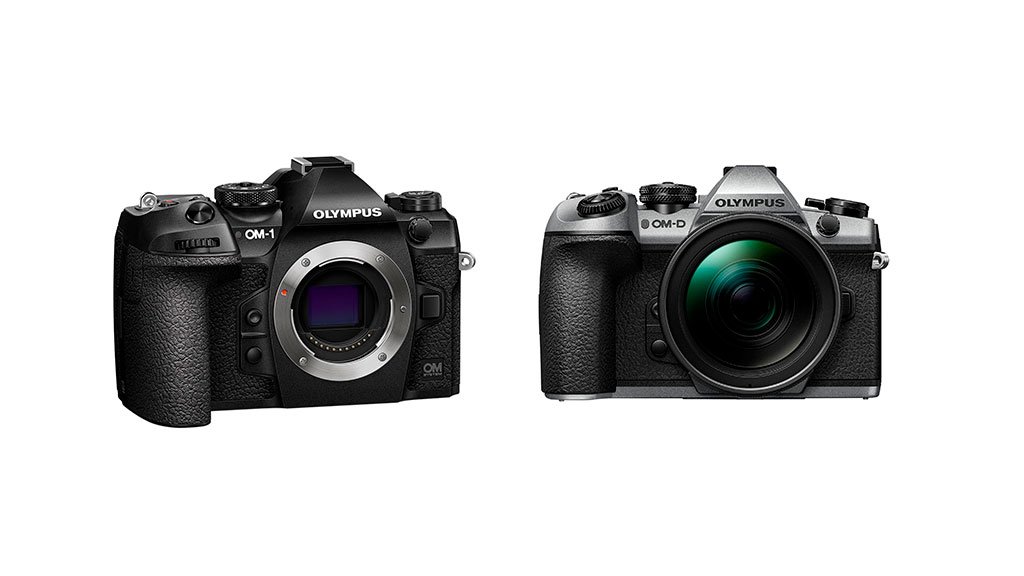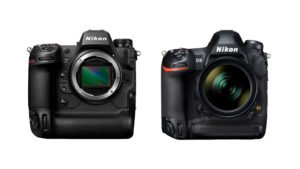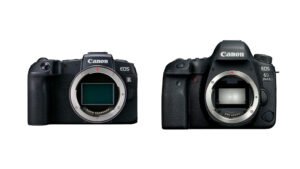The new OM-1 is a very powerful camera, with a magnesium alloy body to capture your best photos and record the best quality videos in any weather or situation. The renewal of the model that nobody expected comes with improvements, and we will now take a look at its main features, as well as its functions. The Olympus E-M1 III is a professional camera with a lightweight body that, like the OM-1, has a magnesium alloy body that allows it to work in all conditions. It is a camera that includes numerous features and upgrades that make it even more special.
OM-1 VS Olympus E-M1 III Specifications
As always we will compare the OM-1 against its closest competitor, in this case the camera that can stand up to it would be the Olympus E-M1 III, and now we will see how they differ.
| OM-1 | Olympus E-M1 III | |
| SENSOR | 4/3 Live MOS backlit | 4/3 Live MOS backlit |
| PROCESSOR | True Pic IX | |
| FOCUS (AF) | Hybrid (1053 points) | Advanced Hybrid |
| VIEWER | 5 760 000-dot black-out-free electronic viewfinder with 120 fps refresh rate and 100 % coverage | 0.74x (35 mm equivalence), approx. 2.3M dots. |
| DISPLAY | Fully articulated OLED display with 1.62 million dots | Glass display with 1.046 million dots |
| ISO | Sensitivity from ISO 200 to ISO 102400 | Sensitivity from ISO 200 to ISO 25600 |
| SHOTS PER SECOND | 20 fps | 15 fps |
| MAXIMUM RAPHAZE | 20 fps | 20 fps |
| VIDEO RESOLUTION | C 4K RAW to 60pFHD 240 fps | C 4K RAW to 24pFHD 120 fps |
| BATTERY | BLX-1USB charging via PD | Allows the use of a BLH-1 battery Carga USB mediante PD |
| WEIGHT | 599 g | 580g |
Sensor
The OM-1 camera retains a back-illuminated 20 MOS Live MOS back-illuminated micro quarter-thirds sensor. The electronic viewfinder is OLED type, with a resolution of 5.76 million dots. The sensitivity range is ISO 200 -102400, and it offers excellent colour control and noise reduction. And as for the speed of shots per second, the camera allows a speed of 20 fps. The Olympus E-M1 III camera also retains a back-illuminated 20 MOS Live MOS back-illuminated micro-quarter thirds sensor. The viewfinder is a liquid crystal display with a resolution of 2.36 million dots. The sensitivity range is ISO 200 -25600 which also provides excellent control of photo quality and minimises noise. And as for the speed of shots per second, the camera allows a speed of 20 fps.
Body
The main feature is a tough and durable body, made of magnesium alloy and sealed to protect the camera against dust and moisture. To highlight some differences compared to the previous E-M1 III model, we can see that the buttons disappear from the top, adapting to the current models of the competition.
Approach
They feature a hybrid autofocus system with artificial intelligence technology, including new AF tracking algorithms, allowing the recognition of animals, birds, cars, planes, trains, etc., keeping them in focus at all times regardless of whether they are in motion.. It also has 1053 selectable dots with contrast detection. Its shutter speed is 60-1/8000 seconds. In mechanical mode, this camera will be able to take 10 pictures per second in RAW format. However, the Olympus E-M1 III decreases the contrast-detected dots to 121 dots.
Battery
The battery is of type BLX1. On the other hand, this new model allows us to charge the camera during use, through a USB connection via PD, a very convenient function. as it supports us longer.
A 1720 mAh BLH-1 battery is used in the Olympus E-M1 III; up to 900 images. Optional: with HLD-9 handle.
Video
The video method of the OM-1 is MPEG 4 AVC. In addition, its resolution will be 4K, in the C4K format it is capable of recording in 60P with a data rate of 202 MB per second. On the other hand, it has an impressive speed with full HD quality being able to record at 240fps. It also has numerous motion shooting functions, delivering excellent video performance. However, the Olympus E-M1 III has a video method of MPEG 4 AVC, just like the OM-1, but its resolution will be 4K, in the C4K format it is able to record in 24P with an information rate at 237 MB per second. On the other hand, it has an impressive speed with full HD quality being able to record at 140 fps.
Opinion
In case you are looking for a good camera for capturing your best photos and recording high resolution videos, this can be a very good option, as the quality is very good, as well as the durability, as its body is prepared for all kinds of adversities. In addition, this new model incorporates the new safety systems, which areAF performance, so you don’t have to worry so much about whether the subject is in focus or not. The Olympus E-M1 III is also remarkable for its reduced size and weight, giving you a freedom that makes it incomparable to bulkier equipment. It will allow you to take your photography to the next level with impeccable design and cutting-edge technology. In short, it has everything you need anytime, anywhere.







